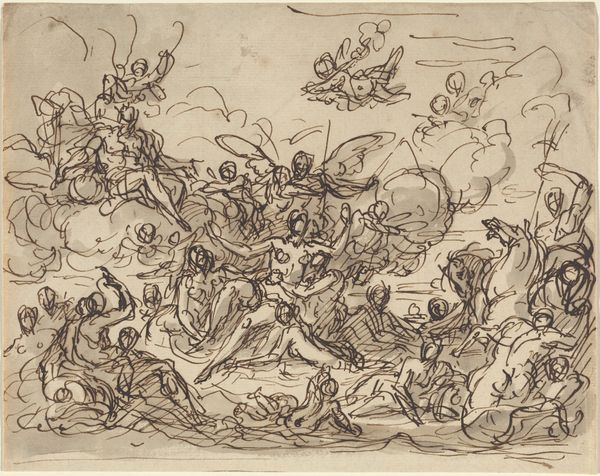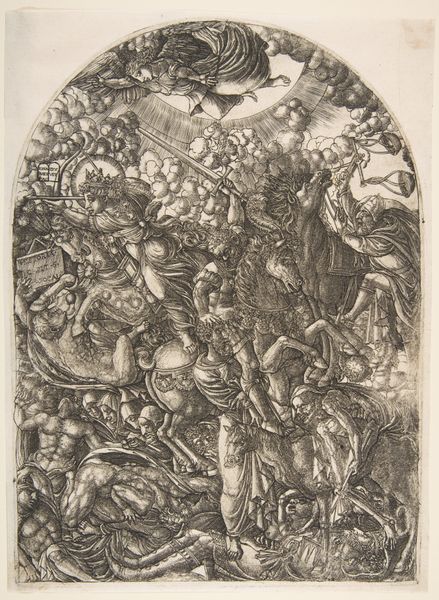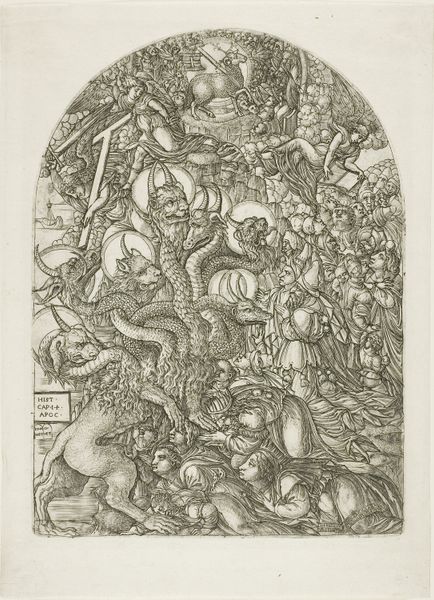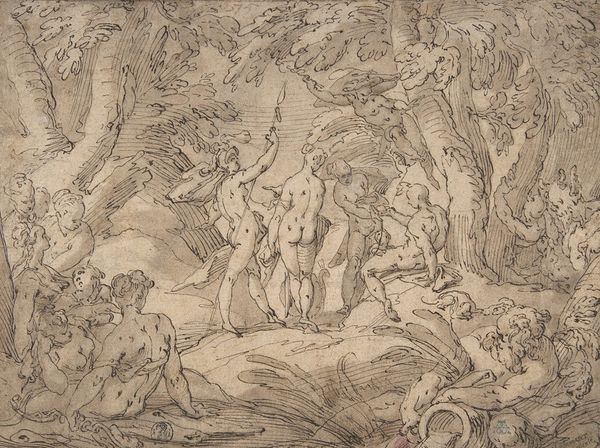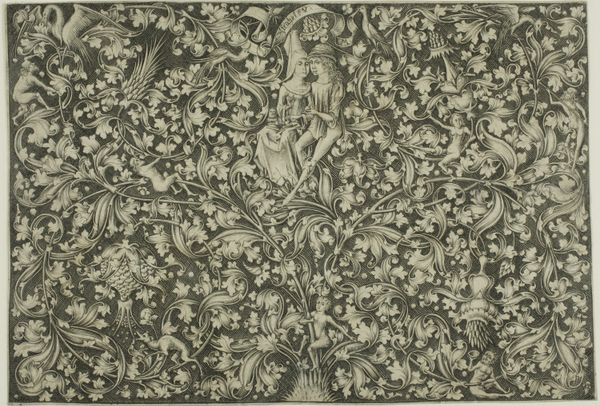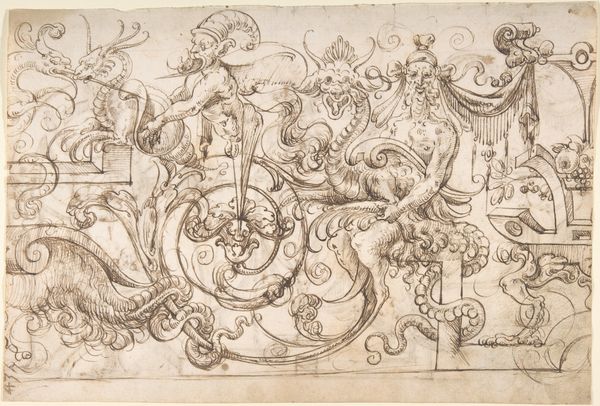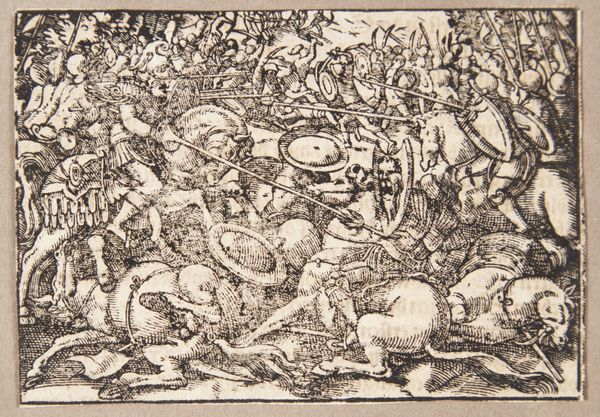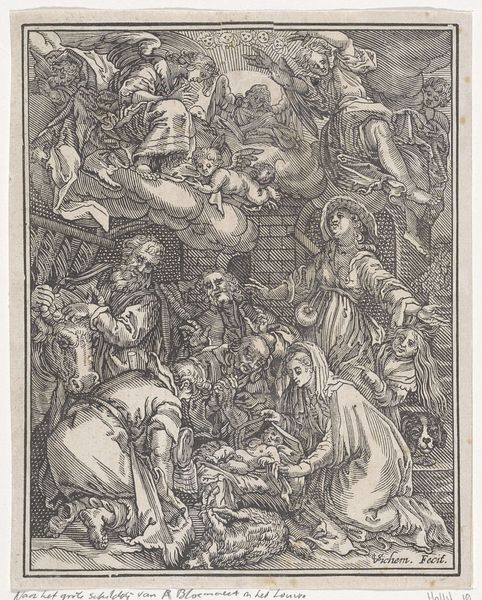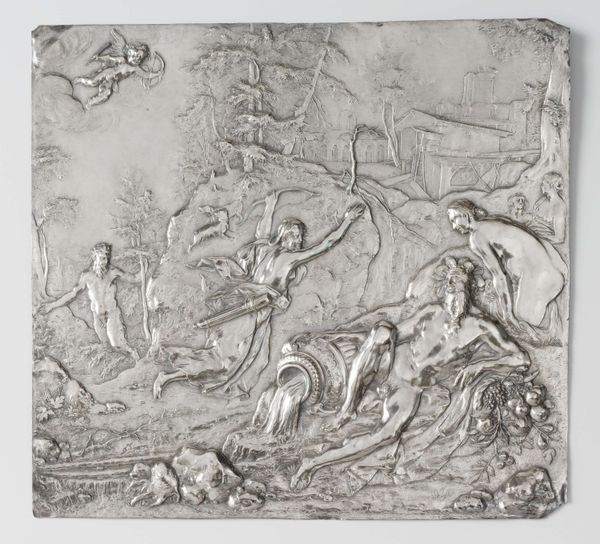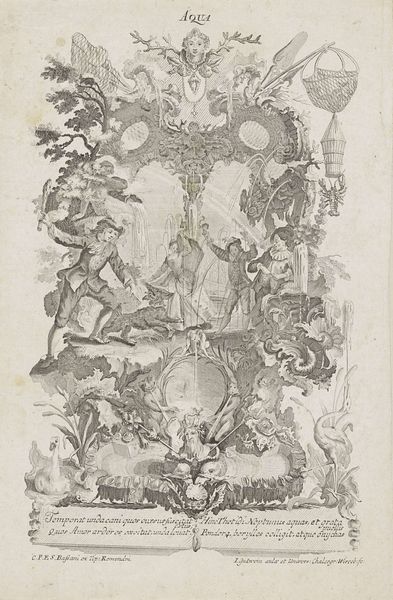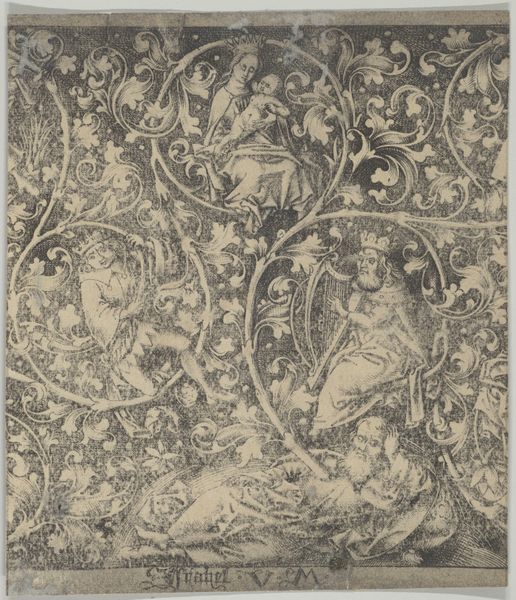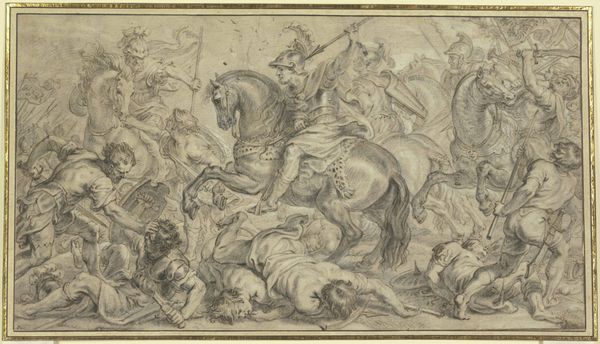
drawing, print, paper, engraving
#
drawing
#
medieval
#
allegory
# print
#
figuration
#
paper
#
history-painting
#
engraving
Dimensions: 242 × 351 mm
Copyright: Public Domain
Editor: This is Alart du Hameel's "The Last Judgment," created between 1478 and 1506. It's an engraving on paper, currently at the Art Institute of Chicago. The sheer detail is overwhelming! It feels like a chaotic tapestry of bodies and landscapes. What do you see in this piece, especially considering the context of its creation? Curator: For me, this print speaks volumes about the social anxieties of the late medieval period. Consider the rise of religious dissent and social unrest. Du Hameel presents us with a stark depiction of divine judgment, reinforcing dominant power structures but also hinting at the chaos simmering beneath the surface. Note how class distinctions are, arguably, flattened in the throes of damnation. Does that observation impact your perspective? Editor: It does. I hadn’t considered the potential challenges to the status quo bubbling under the surface. So, you are suggesting it may reflect fears but also suppressed desires for equality or, perhaps, revenge? Curator: Exactly. Think about the power of the Church at this time. This image, ostensibly promoting religious doctrine, might also unintentionally expose the deep-seated anxieties about social order. How does the depiction of women factor into your reading, considering prevalent gender roles? Editor: I see many figures but didn't really consider gender specifically, just individual fates. Looking closer, it appears both men and women are suffering or being saved in equal measure, which seems… progressive? Curator: Precisely. And while on the one hand the even distribution of gender may seem forward thinking, perhaps Du Hameel inadvertently reveals that morality is held to an impossible standard. Perhaps an early intersectional lens may give us new insights. Editor: Wow, I never would have approached it that way. I came in just thinking it was a standard religious artwork. Now I can see how the political climate really seeps into every detail. Curator: Right? That’s the beauty of art history – continuously re-evaluating and challenging assumptions.
Comments
No comments
Be the first to comment and join the conversation on the ultimate creative platform.
